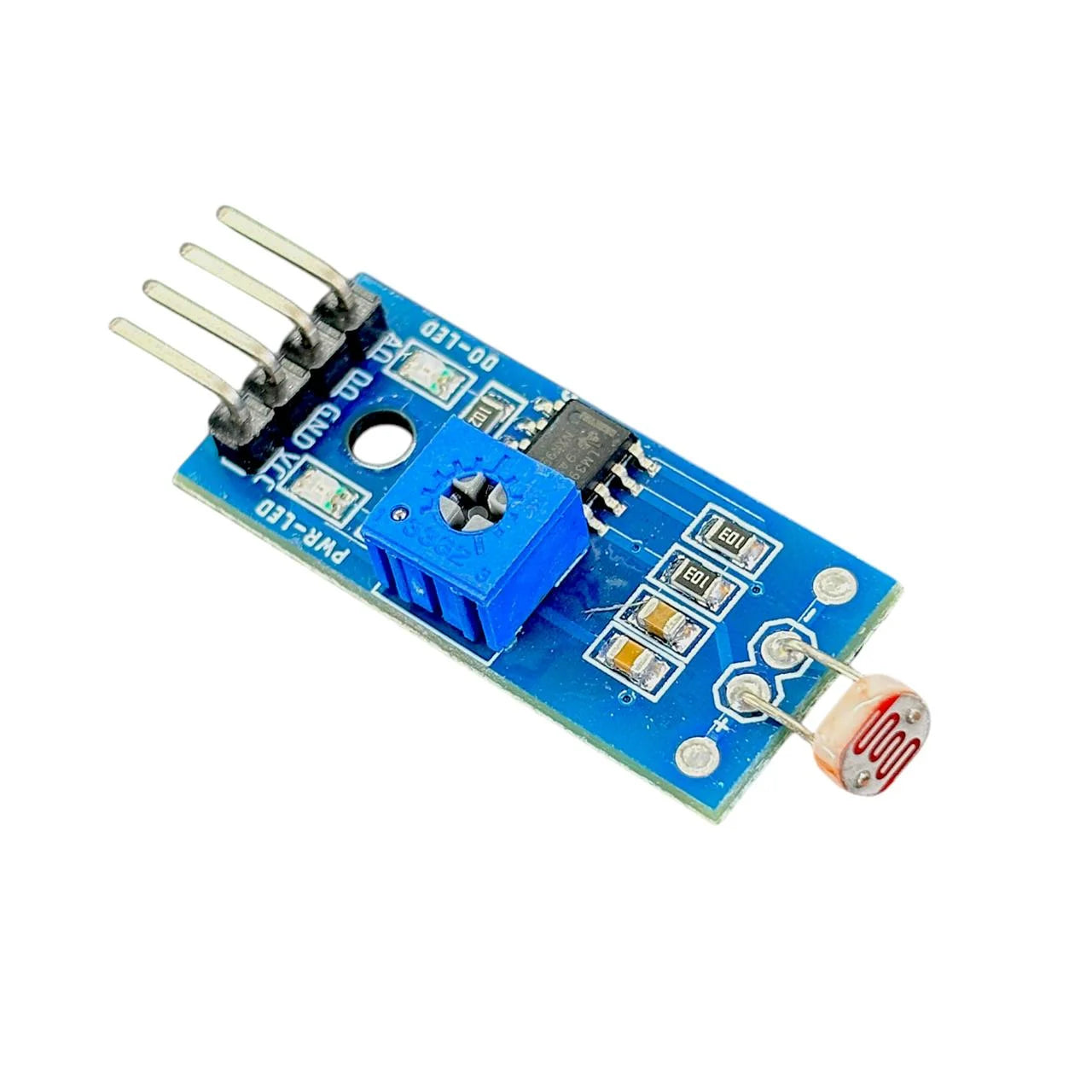Harish Projects
LDR Sensor Module | Light Dependent Resistor Module | Photosensitive
LDR Sensor Module | Light Dependent Resistor Module | Photosensitive
Couldn't load pickup availability
Share
Specification
- Operating Voltage: 3.6V to 5V DC
- Adjustable potentiometer to adjust the sensitivity
- LM393 comparator IC for digital output
- Easy to install thanks to bolt hole provided
- Digital Output
Description
The LDR (Light Dependent Resistor) sensor module is an electronic component used to detect and measure light intensity. It is commonly used in various applications such as automatic lighting systems, solar panels, burglar alarm systems, and photography equipment.
Here is a description of the LDR sensor module:
1. Light Dependent Resistor (LDR): The core component of the module is the LDR itself. It is a type of resistor whose resistance changes in response to the amount of light falling on it. When exposed to light, the LDR’s resistance decreases, and in darkness, its resistance increases.
2. Signal Conditioning Circuit: The LDR sensor module typically includes a signal conditioning circuitry that processes the varying resistance of the LDR and converts it into a usable output signal. This circuitry may include an amplifier, a comparator, and/or a voltage regulator.
3. Power Supply: The module requires a power supply to operate, typically in the range of 3.3 to 5 volts DC. The power supply can be provided externally or derived from the main system power source.
4. Analog Output: The LDR sensor module often provides an analog output signal that represents the detected light intensity. The output voltage or current level varies proportionally with the light falling on the LDR. This analog signal can be connected to microcontrollers, analog-to-digital converters (ADCs), or other devices for further processing.
5. Sensitivity Adjustment: Some LDR sensor modules come with a sensitivity adjustment feature. This allows users to fine-tune the module’s response to light by adjusting a potentiometer or trimmer resistor.
6. Digital Output (Optional): In certain applications, LDR sensor modules may also offer a digital output signal. This digital output is typically a binary signal (high or low) that indicates whether a specific light intensity threshold has been crossed.
7. Mounting Options: LDR sensor modules often come with mounting holes or slots, making it easy to attach them to a surface or integrate them into a project.
8. Light Protection: To prevent the LDR from being affected by stray light or ambient light sources, the module may include a protective casing or cover. This helps to ensure accurate light intensity measurements.
Overall, the LDR sensor module is a versatile device that allows for the detection and measurement of light intensity in various applications. Its simplicity, affordability, and ease of use make it a popular choice among hobbyists, students, and professionals working with light-related projects.

It is good product

